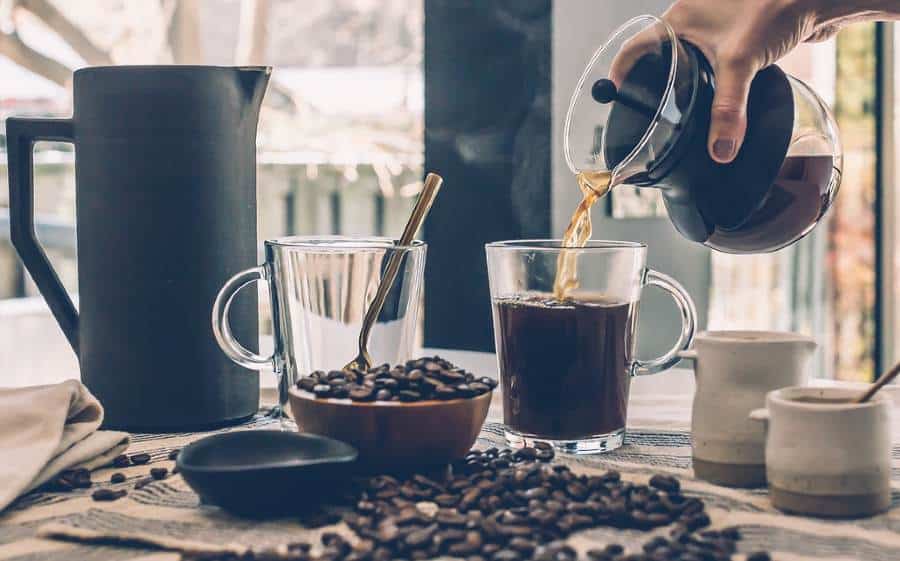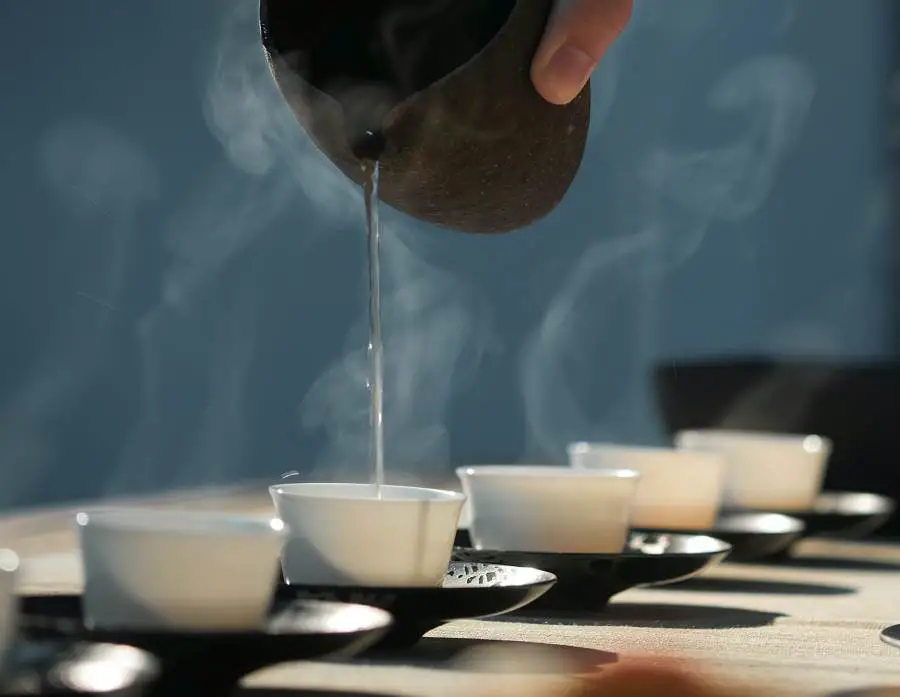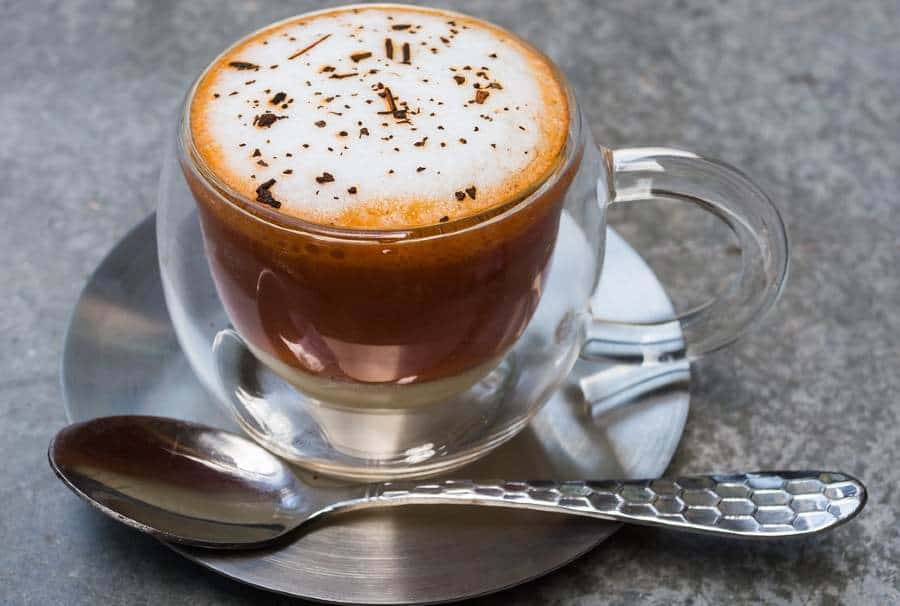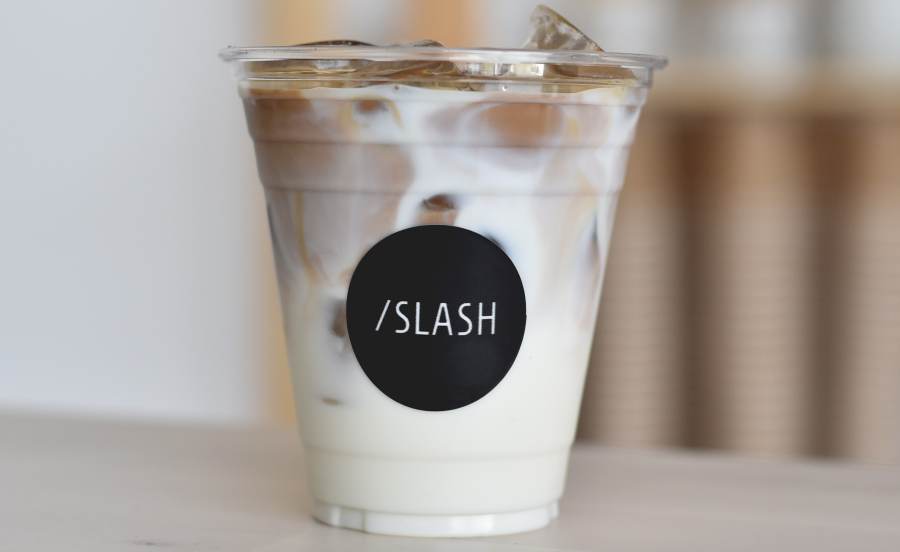
Does the type of mug that you use for coffee affect the way you enjoy your coffee? Does coffee taste better in some coffee mugs than others? Without a doubt, the type of mug that you use for coffee can influence your sensory experience.
In fact, apart from the material of the cup, studies have shown that the color and shape of the crockery in which food and drinks are served influences our perception of the flavors.
This does not take away from the fact that a coffee mug does not change bad coffee to good coffee. A coffee mug can elevate your experience when drinking an amazingly brewed coffee.
1. Ceramic Coffee Mugs
Most coffee lovers agree that ceramic is the best material for coffee mugs as it combines neutrality, affordability, and heat retention. Ceramic mugs do not leach new flavors into the coffee.
However, different activities and environments may not be suitable for ceramic mugs. For example, metallic mugs are more suitable for outdoor activities such as camping and hiking.
Moreover, factors such as the type of coffee drink make some mugs more suitable than others. For example, a latte is visually appealing in a glass cup with the priceless cascading effect as the coffee cuts through the frothed milk.
Glass coffee mugs are also a good choice for pour-over coffee and nitro cold brew.
Pros
- Neutral. No external flavors
- Not toxic
- Retains heat longer than glass
- Affordable and available in different sizes
- Sturdy and more durable than porcelain
- Easy to clean and dishwasher safe
- Microwave safe
- Available in bigger sizes than porcelain and Bone China
- More choices for decorations. Unlike the more elegant and classy Bone China and porcelain coffee mugs, you have more freedom over the artwork on a ceramic mug
Cons
- Chips easily
- Not a great choice for travel mugs
Ceramic mugs are molded from clay and other non-metallic minerals and then heated at about 2100 degrees Fahrenheit. The mugs are then glazed (coated with a smooth finish) to seal the pores.
Read about scratched coffee mugs and whether they pose any risk to you.
2. Bone China vs Porcelain Coffee Mugs

Technically, Bone China and porcelain are types of ceramics that are fired at a higher temperature (up to 2600°F) than regular ceramics. The higher temperatures allow for thinner-walled mugs and a glassy finish.
Consequently, Bone China and porcelain mugs have much thinner walls and are lighter than other ceramics. They also lose heat faster.
When you hold a Bone China or porcelain mug under light, you should see your coffee through the thin wall of the mug. The easiest way to tell the difference between porcelain and Bone China mugs is that Bone China has the ‘Bone China’ inscription at the bottom of the mug.
Porcelain is also known as Fine China or China where the process was initially developed. Porcelain is made from Kaolin clay and other non-metallic minerals and breaks more easily than Bone China and regular ceramics.
Bone China, on the other hand, incorporates finely ground ash from cow bone to fortify the mugs. Premium Bone China mugs contain about 30 percent bone ash and, like porcelain, the mugs are heated at 2100-2600°F to produce ultra-thin and delicate mugs.
Bone China and porcelain mugs provide a classy feel with their thin, smooth, and translucent makeup. The bone ash provides unique hues and shades of color and improves the durability and chip resistance of the mugs.
Call it elegance on a cup. Bone China is usually pricier than porcelain (Fine China).
Pros
- Bone China and porcelain are more aesthetic than other ceramics. Bone China mugs ooze class and elegance
- Higher stain resistance
- The faster cooling can be a positive. Coffee contains some subtle flavors that are easier to miss when the coffee is piping hot. The mug cools the coffee faster and the flavors come to life as the coffee cools
- White China mugs are perfect for serving pour-over coffee as they accentuate the clarity of the coffee
- Porcelain and Bone China are both microwave and dishwasher safe. However, most people prefer to handwash porcelain
- Neutral. They do not leach new flavors into the coffee
- Perfect for gifts
Cons
- Fragile. They break easily. However, Bone China with a higher bone ash percentage is quite sturdy
- Poor heat retention due to the thin walls. Your coffee becomes cold much faster
- Costly. Premium Bone-and-Fine China can be prohibitive in terms of prices. Usually reserved for formal dinings
- Usually smaller in size
3. Stainless Steel
Whereas ceramic coffee mugs are ideal in a home or coffee shop setting, stainless steel mugs are the winner when it comes to the outdoors and retaining temperature. Double-walled stainless steel mugs with fitting lids can keep coffee warm for hours.
Stainless steel mugs are also ideal for cold coffee as they maintain the inner temperature longer than glass and ceramics. Your cold brew or iced latte will stay cold for longer in a stainless steel mug.
Although stainless steel should be neutral, most people have found that over time, stainless steel mugs tend to retain flavors and even impart bad odors and flavor on the coffee probably as the finish wears down.
Pros
- Relatively affordable
- Light in weight and portable
- Stain-resistant. Even when stained, the stains are easy to remove
- Easy to clean and dishwasher safe
- Durability. Stainless steel mugs are more durable than other coffee mugs. You can break a stainless steel mug by dropping it
- Vacuum insulated stainless steel mugs retain heat longer
- Stainless steel mugs keep iced drinks cold for longer
Cons
- Single-walled stainless steel mugs lose heat faster than ceramics and glass
- Most stainless steel mugs tend to affect coffee flavor after repeated use
- Not suitable for the microwave
Stainless steel is applied as a coating in copper mugs to make them safe for coffee and other acidic drinks that can react with copper.
4. Glass Coffee Mugs

Glass coffee mugs give an element of sophistication to your drink as they are transparent. Imagine drinking cortado, Irish coffee, or nitro cold brew in an opaque ceramic or stainless steel mug: it just beats the whole point. I know pour-over coffee snobs who will not touch pour-over coffee that is not served in a glass mug.
Think about the elegance of a Chemex carafe with its “clean” coffee.
Some coffee shops prefer to serve lattes in tall glass cups to show the image of the espresso cutting through the foamed milk. The cascading effect is somewhat similar to that of a nitrogen-infused cold brew. Glass cups are also suitable for iced coffee and frappes.
Glass mugs have come a long way with tempered glass coffee mugs that are up to five times stronger than regular glass and double-walled glass mugs that keep the drink warm for longer now available.
Pros
- Stylish and provide a clear view of the drink
- Neutral and they do not impart flavors in the coffee
- Easy to clean
- Affordable
- Recyclable
Cons
- Regular glass mugs are fragile and require handling with care including during cleaning. Most glasses are safe to clean only on the top rack of the dishwasher
- Poor heat retention capability. The coffee cools much faster in glass mugs
- Stains easily especially from water
- Some glass mugs tend to fade with more cycles in the dishwasher
5. Plastic

Transparent plastic cups are usually used for on-the-go cold coffee and coffee milkshakes such as frappes and they provide a clear view of the drink. Although plastic cups are cheap, durable, and recyclable, they are discouraged for coffee as plastic absorbs some of the coffee flavors thus altering the flavor of the coffee.
There are also environmental concerns to contend with. Always ensure the plastic cups are BPA-free before buying them to avoid toxic BPA from leaching to your coffee. Some plastic cups my also contain
6. Stoneware
Stoneware is a ceramic that is denser than regular ceramics. Stoneware coffee mugs have thick walls that are poor at transferring heat hence stoneware mugs retain the temperature of hot coffee for longer and also keep cold drinks cooler for longer. Like other ceramics, stoneware mugs are neutral to the aroma and flavor of the coffee.
Stoneware coffee mugs are very durable and resistant to chipping making them ideal for vintage gifts for your friends and clients. Stoneware is also resistant to thermal shock and can go directly from the fridge to the oven and vice versa without cracking.
7. Enamel
Enamel coffee mugs are iconic. These are the type of mugs that you are likely to find in a cabin in the woods or in the basement of your parent’s house. They are the ultimate retro-mugs.
Enamel coffee mugs are metallic mugs that are glazed with enamel for a stylish finish that is neutral. Here is an article that explains why you should use enamel mugs and when to use them.
Pros
- Can be heated directly in a fire pit, on a flame stove, induction cooker. Enamel mugs are ideal for the outdoors such as camping
- Rust-resistant
- Resistant to corrosion by acids
- Sturdy and durable
Cons
- Susceptible to chipping that exposes the metallic parts which end up rusting
- Not safe for the microwave
- Can burn your hands and lips as enamel mugs can get really hot
8. Melamine(Hard Plastic)
Melamine is a hard plastic that is durable and very hard to chip or break. Most plastic tableware contains melamine.
Melamine is a cheaper and more durable alternative to Fine China especially in restaurants where replacement costs for broken Fine China can hurt the business. It is also dishwasher safe.
Melamine coffee mugs insulate the coffee and keep it hot for longer. The FDA has stated that although melamine tableware may contain melamine residues from the manufacturing process, food and drinks may be served in melamine tableware.
However, heating coffee in melamine mugs can cause high amounts of melamine to leach into the coffee and cause health problems. Therefore, avoid microwaving melamine coffee mugs unless the mug is specified as microwave safe.
9. Paper

Paper cups are common in coffee shops for serving hot coffee. Double-and-triple walled paper cups prevent heat transfer from hot coffee with triple-walled cups having an extra layer of coating for extra insulation. Paper cups are neutral and they do not alter the taste of coffee.
Coffee paper cups usually have tight caps to prevent the drink from spilling. Most paper cups are recyclable and compostable. They are ideal for coffee on the go.
Recap
When it comes to the best materials for coffee mugs, it is not a one material fits all. Different materials are suitable for different types of coffee and scenarios.
Overall, ceramic is the best material for coffee mugs as it’s relatively durable and affordable and the coffee stays warm for longer. Ceramic mugs do not absorb coffee flavors or leach any flavors into the drink. Therefore, your coffee does not lose the subtle nuanced notes.
Bone China and porcelain are common in fine dining and high-end coffee shops. They are elegant and pricey most people will store them away for very special guests and occasions.
They are an excellent choice for gifts as they ooze class. Bone China is up to five times stronger than porcelain.
Enamel coffee mugs are retro-style and are ideal for camping. Clear plastic and paper cups are single-use and are ideal for coffee on the go.
Double-walled glass has leveled up the quality of glass mugs by providing insulation. Glass mugs are ideal for coffee drinks such as cortados, filter coffee, Irish coffee, and nitro cold brew.
